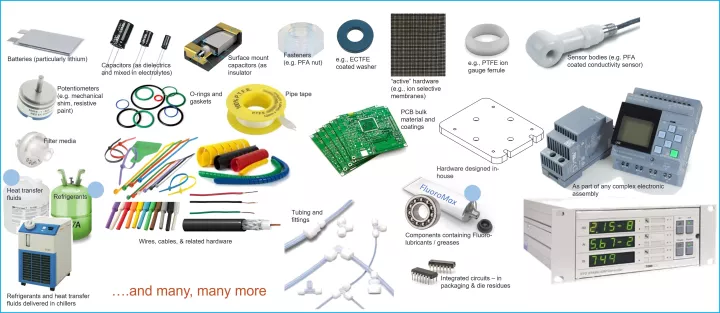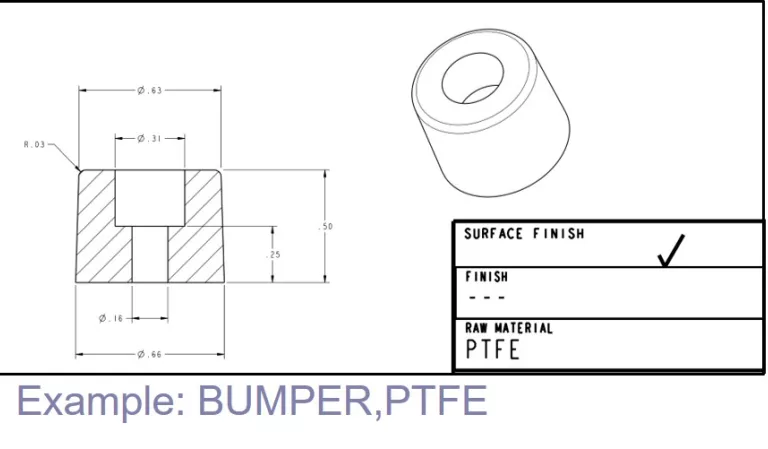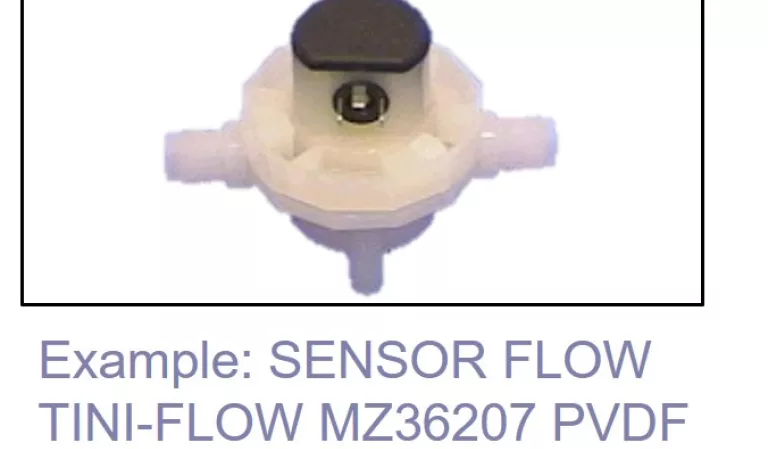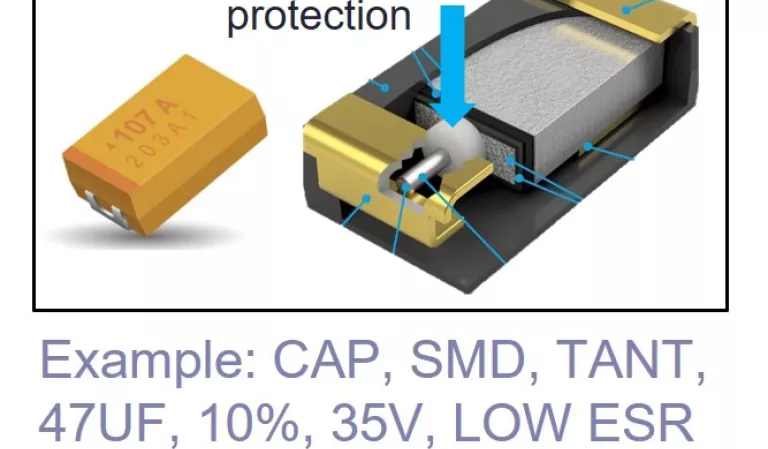On this page you will find:
- PFAS-Containing Components
- Unusual Cases
- Component Classes
PFAS-Containing Components
Both SEMI and the Semiconductor PFAS Consortium have working groups that have been investigating the use of PFAS (or PFAS sub-sets) in hardware (also known as ‘articles’) for several years. The following picture illustrates, at a very high level, the types of articles in which PFAS can be found.
- Mention of an article type in this figure means it is likely that the article type contains PFAS, it does not mean every article of the type contains PFAS.
- Three examples of containerized PFAS-containing mixtures are shown (indicated with blue dots) to emphasize the fact that adding a PFAS substance or PFAS-containing mixture such as grease or refrigerant into (or onto) an article will make that article a PFAS-containing article. However, containerized substances and mixtures are usually regulated distinctly from articles.

The term ‘component’ means a lowest level bill-of-materials item acquired by an equipment manufacturer to make their product. A component can be as simple as a cable tie or as complex as a wafer handling robot system. An assembly for which the equipment manufacturer controls the bill-of-materials is not a component. An ‘article’ is essentially a piece of hardware that has at some time existed independently. Components are also articles. ‘Part’ has a broader meaning and is used for components, assemblies of components, and occasionally items within a component.
Unusual Cases
Small amounts of a variety of PFAS substances can arise in articles, mixtures, and substances from various industrial processes. The contribution of new PFAS might initially be dismissed as too small to matter, but careful consideration should be given to the fact that concentrations of regulatory interest can be as low as a few parts per billion. Here are a couple examples:


Component Classes
When considering components and PFAS, it can be useful for equipment manufacturers to organize their components into 3 fundamental groups:

Group 1 - Fabricated components designed by the equipment manufacture to contain PFAS
The equipment manufacturer designs the component and specifies a PFAS substance as a material, or a PFAS containing mixture (e.g., paint) as a finish. Fabricated components are also known as FAB parts. These are likely the easiest use-cases to find, provided the material and finish fields are searchable in a drawing database. If drawings stored only as image, or materials and finishes are random text the file, manual reading of each drawing will be needed.

Group 2 – Off the shelf components with PFAS overtly revealed
The equipment manufacturer selects the component off the shelf (OTS) such as from a catalogue or website. The component description or other prominent information indicates at least one PFAS is present in the component. These are easy to find for at least determining the component is a PFAS-containing component but does not necessarily reveal all PFAS. For example, the PVDF PFAS used for the main part of this sensor could contain a PFAS fire retardant, or wiring inside the sensor could contain PFAS.

Group 3 – Off the shelf components with PFAS undisclosed
The equipment manufacturer selects the component off the shelf (OTS). PFAS is present in the component, but it is not prominently disclosed (e.g., it is not revealed in the product description). These are the most difficult to find and control. It will require careful and detail-oriented information along all levels of the supply chain to find these uses of PFAS that are undisclosed at the component level.
Please note: SEMI makes no warranties or representation to the accuracy or usefulness of the information contained on this webpage. Accuracy is solely the responsibility of the user. Users are cautioned to refer to other relevant literature of the subject matter herein. This information is subject to change without notice. This "explainer" was developed by members of the SEMI PFAS Working Group. Please send suggestions for improvement to ehs@semi.org
